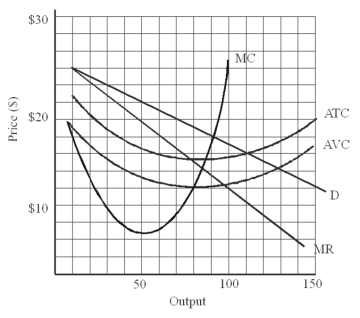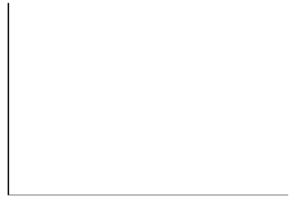Correct Answer

verified
Correct Answer
verified
Multiple Choice
Each of the following is an example of price discrimination except
A) senior citizen discounts at restaurants.
B) lower-priced movie tickets at "rush hour" to attract customers at dinner time.
C) high-priced tickets just behind the bench of the NBA championship team.
D) student rates for subscriptions to Business Week.
Correct Answer

verified
Correct Answer
verified
Multiple Choice
A monopolistically competitive industry has
A) a differentiated product and barriers to exit and entry.
B) a differentiated product and ease of exit and entry.
C) identical products and barriers to exit and entry.
D) identical products and ease of exit and entry.
Correct Answer

verified
B
Correct Answer
verified
Multiple Choice
Under monopolistic competition there
A) is product standardization.
B) is perfect price discrimination.
C) are too many firms producing over-differentiated products.
D) are many firms producing differentiated goods and services.
Correct Answer

verified
Correct Answer
verified
Multiple Choice
Which statement is true?
A) The monopolistic competitor always makes a profit in the short run.
B) The monopolistic competitor operates at peak efficiency.
C) Product differentiation takes place in the minds of the buyers.
D) None of these statements are true.
Correct Answer

verified
Correct Answer
verified
Multiple Choice
Product differentiation is _____ based on real physical differences among products.
A) always
B) sometimes
C) never
Correct Answer

verified
Correct Answer
verified
Multiple Choice
__________________ is the crucial characteristic of monopolistic competition.
A) Product differentiation
B) Price discrimination
C) Economies of scale
D) Identical products
Correct Answer

verified
Correct Answer
verified
Short Answer
______% of all American business firms are monopolistic competitors.
Correct Answer

verified
Correct Answer
verified
Multiple Choice
Statement I. The airlines often engage in price discrimination. Statement II. Price discrimination occurs when a seller charges two or more prices for the same good or service.
A) Statement I is true and statement II is false.
B) Statement II is true and statement I is false.
C) Both statements are true.
D) Both statements are false.
Correct Answer

verified
Correct Answer
verified
Short Answer
A monopolistic competitor takes a loss only in the _____________.
Correct Answer

verified
Correct Answer
verified
Short Answer
The firm that practices price discrimination needs to be able to distinguish _________; the seller also has to be able to prevent the buyers in the lower-priced market from ________ the product to those in the higher-priced market.
Correct Answer

verified
two or more separate markets; reselling
Correct Answer
verified
Multiple Choice
Use the following figure to answer the question :
 -This profit-maximizing firm produces a quantity of a little over _______ units.
-This profit-maximizing firm produces a quantity of a little over _______ units.
A) 125
B) 110
C) 85
D) 65
Correct Answer

verified
Correct Answer
verified
Multiple Choice
Use the following figure to answer the question :
 -This profit-maximizing (loss-minimizing) firm produces a quantity of about _______ units.
-This profit-maximizing (loss-minimizing) firm produces a quantity of about _______ units.
A) 100
B) 80
C) 50
D) 30
Correct Answer

verified
Correct Answer
verified
Multiple Choice
Use the following figure to answer the question :
 -If the firm is maximizing profits (minimizing losses) , this firm charges a price of _____.
-If the firm is maximizing profits (minimizing losses) , this firm charges a price of _____.
A) $10.30
B) $14.10
C) $18.40
D) $25.90
Correct Answer

verified
Correct Answer
verified
Multiple Choice
In the long run the monopolistic competitor
A) charges the same price but produces a greater output than the perfect competitor.
B) charges a higher price but produces a smaller output than the perfect competitor.
C) charges a higher price and produces a higher output than the perfect competitor.
D) charges a lower price and produces a lower output than the perfect competitor.
E) charges a lower price but produces a higher output than the perfect competitor.
Correct Answer

verified
B
Correct Answer
verified
Multiple Choice
Statement I: The absence of significant barriers to entry ensures that long run profits will be competed away for the monopolistic competitor. Statement II: Providing better service, ambience, or a convenient location are all forms of price discrimination.
A) Statement I is true and statement II is false.
B) Statement II is true and statement I is false.
C) Both statements are true.
D) Both statements are false.
Correct Answer

verified
Correct Answer
verified
Multiple Choice
Long-run equilibrium for firms in monopolistically competitive industries is similar to that for firms in perfect competition in that
A) price equals minimum possible average total cost.
B) price equals marginal cost.
C) marginal revenue equals average total cost.
D) price equals average total cost.
Correct Answer

verified
Correct Answer
verified
Multiple Choice
Assume a monopolistically competitive firm is producing at an output level at which marginal revenue is $15 and marginal cost is $18. The profit-maximizing firm should
A) raise output.
B) lower output.
C) keep output constant.
D) The firm should take none of these actions.
Correct Answer

verified
Correct Answer
verified
Essay
Draw a graph of the monopolistic competitor in the long run in the graph below. 
Correct Answer

verified
Correct Answer
verified
Multiple Choice
If a monopolistically competitive firm is making profits
A) it can be assured of high profits for all time to come.
B) the entrance of new firms decreases the demand facing the firm, thereby reducing profits.
C) the entrance of new firms increases the demand facing the firm, thereby reducing profits.
D) the entrance of new firms increases costs, thereby reducing profits.
Correct Answer

verified
Correct Answer
verified
Showing 1 - 20 of 164
Related Exams